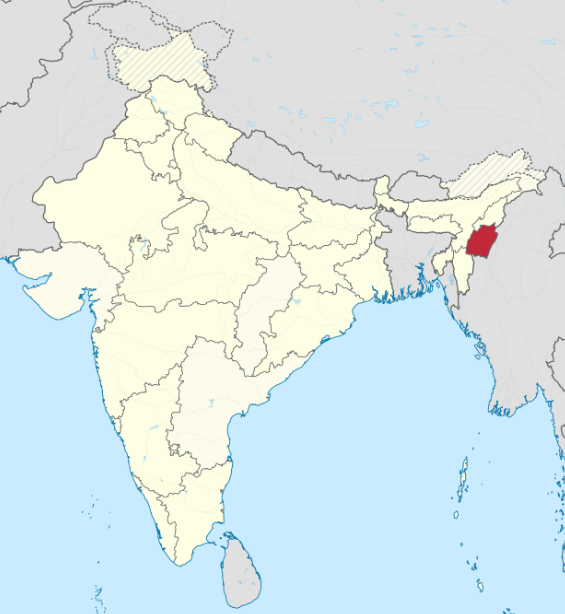
On December 20, 2023, 87 victims of ethnic violence from the Zo-Kuki community in Manipur were finally laid to rest. This long-delayed development underscores the lack of attention the ongoing conflict in Manipur has received from major media channels. There was a prioritization of other issues while the violence in Manipur raged for months, displacing thousands and claiming hundreds of lives. A recent development on March 19, 2024, underscores the gravity of the situation. Due to the ongoing violence, the government in Manipur informed the Delhi High Court that conducting civil service exams within the state would be impossible. It’s been months since the state has been burning, but there is still no action to be seen nor any significant media attention. Six months after hostilities began, the Supreme Court intervened, directing the state to conduct proper burials for the victims. The Justice Gita Mittal committee report revealed that over 175 people had died in the clashes, with many bodies unclaimed. Despite this human tragedy, the issue remained largely unnoticed by mainstream media. Reporters rarely ventured to Manipur, failing to share the plight of its people with the nation. In contrast, incidents like the sexual assault of Kuki women sparked national outrage, but only after the video went viral on social media. The Prime Minister broke the silence on the issue after this. Mainstream media, which readily deployed journalists to cover events like the Israel-Hamas conflict, remained silent on the broader issue of ethnic violence in Manipur. While some news reports by organizations like The Quint, Indian Express, Mojo story, Deccan Herald, and BBC have covered the ethnic clashes in Manipur, like details of a mass burial or a recent incident, their focus ranged from lacking in-depth analysis to historical context. Yet, mainstream media exemplified potential media neglect with minimal coverage of the issue, potentially misleading viewers with sensational headlines. It’s been months since the violence erupted in Manipur. While the clashes themselves were devastating, a hidden danger continues to plague the region: the rampant spread of misinformation and fake videos. These online lies act like poison, inflaming tensions and fueling community distrust. Imagine seeing a picture of a barren wasteland online, with a caption claiming it's once-lush forest destroyed by the Kuki community in Manipur. Shocking, right? Except, it's completely untrue. This is precisely what happened two weeks ago – a pair of images showing a reforestation project in Brazil were falsely presented as evidence of environmental damage in Manipur. This fabricated story not only spreads hate but also hinders efforts to find peaceful solutions. Another example: a video surfaced showing armed men claiming to threaten a takeover of Kangla Fort in Imphal. Except, this, too, was a lie. Originally from Myanmar, the video was edited to add a fake audio track and a misleading location. This manipulation not only spreads fear but also risks sparking unnecessary conflict. We've seen firsthand how misinformation fuels violence. These fake stories create an "us vs. them" mentality, where communities believe the worst about each other based on fabricated evidence. This fuels anger and distrust, leading to real-world violence, as tragically witnessed in Manipur. There has been escalating violence between the Meitei and Kuki ethnic groups in Manipur that has led to a state of turmoil resembling civil war. The conflict revolves around land disputes and power struggles between the two largest ethnic groups in the region. In May, a disturbing video surfaced showing Meitei men humiliating two Kuki women, adding to the cycle of violence against women in the area. Manipur is home to approximately 3.3 million people, mostly Meiteis and significant minorities, including Kukis and Nagas. The violence has resulted in over 130 deaths, 400 injuries, and the displacement of more than 60,000 people. Both the army and paramilitary forces have struggled to contain the unrest, with reports of looted police armories, destroyed religious sites, and ruined villages. The conflict originated when the Meiteis demanded official tribal status, which the Kukis resisted, fearing it would further empower the Meitei community. Additionally, issues such as the war on drugs, illegal migration from Myanmar, land pressure due to population growth, and unemployment have fueled the unrest. The current violence primarily pits the Meitei against the Kuki. This ethnic strife has historical roots, exacerbated by religious and territorial disputes. The attack on the Kuki women triggered national outrage. Prime Minister Narendra Modi condemned the incident and pledged action; however, criticism has mounted over the government's delayed response to the crisis. Despite deploying tens of thousands of security personnel, the violence persists, causing further displacement. The state government, led by Chief Minister N. Biren Singh from BJP, is accused by the Kukis of favoring the Meitei community in policies such as the crackdown on poppy cultivation. This perceived bias has further fueled tensions between the communities. As the conflict in Manipur intensifies, concerns grow over the humanitarian crisis and the government's ability to restore peace and address the underlying grievances of the various ethnic groups. This media bias raises critical questions. Was the violence in Manipur deemed too insignificant for prime-time news? Why were journalists seemingly content to report from afar on international conflicts while ignoring the suffering on their doorstep? Does the media prioritize certain narratives over others? Ultimately, the focus should be on holding all mainstream media outlets accountable for comprehensive and balanced reporting. The silence surrounding the Manipur violence is a stark reminder of media bias. In-depth government attention is needed to expose the root causes of the conflict, hold those in power accountable, and give voice to the suffering people of Manipur. Only then can true healing begin.Surfacing of misinformation
History of the Manipur conflict
Questions that Demand Answers
05 Jun 2024
Anushka Bharadwaj